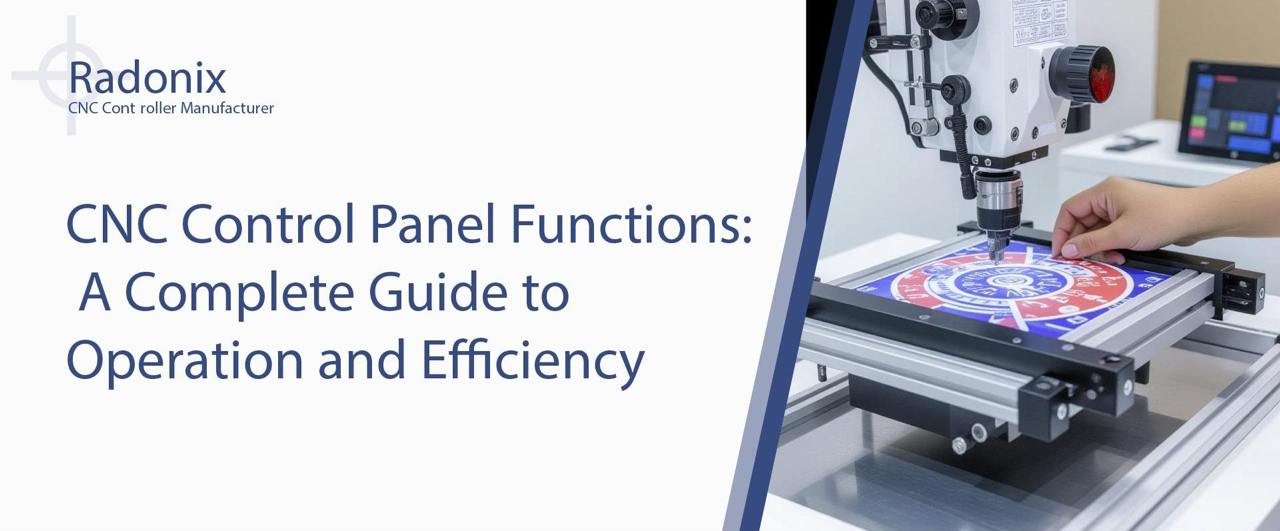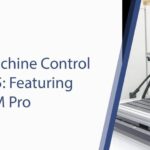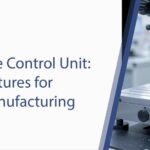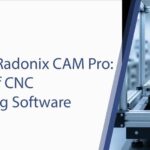Overview of CNC Control Panel Functions in Modern Machining
CNC control panel functions form the backbone of modern machining operations. These interfaces allow operators to manage complex tasks with ease. In precision manufacturing, CNC control panel functions handle everything from program input to real-time monitoring. They ensure machines run smoothly, reducing errors and downtime.
A typical CNC machine control unit integrates hardware and software for optimal performance. It translates digital designs into physical actions. Key CNC control panel functions include axis control, spindle speed adjustment, and tool path execution. These features enable intricate cuts in materials like metal or wood.
In today’s factories, numerical control panels have evolved with touchscreen technology. This makes operations intuitive for users. Advanced CNC control panel functions now include predictive maintenance alerts. They help prevent breakdowns, boosting efficiency.
For businesses, understanding CNC control panel functions is vital. It leads to better productivity and cost savings. At radonix.com, we provide solutions that enhance these functions. Our systems support diverse applications, from prototyping to mass production.
Numerical control panels offer data logging for performance analysis. This data drives process improvements. Overall, mastering CNC control panel functions transforms machining into a precise, efficient art.
Core CNC Machine Control Unit Components and Their Roles
The CNC machine control unit consists of several core components. Each plays a specific role in operation. The central processor interprets G-code instructions. It coordinates movements across axes for accuracy.
Input devices, like keyboards or touchscreens, form part of CNC control panel functions. They allow program entry and parameter adjustments. Output displays show status updates, errors, and progress. This keeps operators informed.
Servo motors and drives are essential. They execute precise movements based on control signals. Feedback sensors, such as encoders, ensure positional accuracy. These components close the loop for reliable performance.
Power supplies maintain stable energy flow. Safety relays integrate into the CNC machine control unit for emergency stops. Numerical control panels often include I/O modules. These connect to external devices like tool changers.
- Processor: Handles computations and logic.
- Memory: Stores programs and settings.
- Interface: Facilitates user interaction.
Together, these components enable seamless CNC control panel functions. They support high-speed operations in demanding environments. At radonix.com, our units feature robust components for longevity. Understanding these roles helps in selecting and maintaining effective systems.
How Numerical Control Panels Enhance Precision and Speed
Numerical control panels revolutionize machining by boosting precision and speed. These digital interfaces replace manual controls with automated accuracy. They use numerical data to guide tools, minimizing human error.
In precision tasks, numerical control panels ensure micron-level tolerances. They adjust feeds and speeds dynamically. This adapts to material variations, maintaining quality. CNC control panel functions within these panels include real-time compensation for tool wear.
Speed gains come from optimized tool paths. Numerical control panels calculate efficient routes, reducing cycle times. Multi-axis support allows complex geometries in one setup. This cuts production time significantly.
Integration with sensors enhances feedback loops. Numerical control panels detect deviations instantly, correcting them on the fly. This leads to faster, more reliable outputs.
- Precision: Achieved through closed-loop systems.
- Speed: Enabled by rapid processing.
- Efficiency: Improved via automation.
Compared to older systems, numerical control panels offer superior performance. They support Industry 4.0 features like IoT connectivity. For manufacturers, adopting these panels means competitive edges in speed and accuracy.
At radonix.com, our numerical control panels are designed for high-precision applications. They integrate seamlessly with CNC machine control units, driving operational excellence.
Comparison of CNC Control Panel Functions Across Brands (Radonix CAM Pro, Mastercam, Fusion 360, SolidCAM)
CNC control panel functions vary across brands, each offering unique advantages. Radonix CAM Pro excels in user-friendly interfaces and seamless integration. Its CNC control panel functions include intuitive touch controls and real-time diagnostics. Advantages lie in affordability and broad compatibility, ideal for small shops. It supports diverse hardware, making it versatile for woodworking or metalworking.
Mastercam focuses on advanced programming. Its CNC control panel functions feature detailed simulation and multi-axis support. Strengths include robust toolpath optimization, reducing errors. However, it demands steeper learning curves. It’s best for large-scale operations needing complex CNC machine control unit capabilities.
Fusion 360 provides cloud-based collaboration. CNC control panel functions here emphasize accessibility and generative design. Advantages include free tiers for starters and easy updates. It shines in team environments but may face latency issues in offline setups.
SolidCAM integrates tightly with SolidWorks. Its CNC control panel functions offer iMachining for faster cuts. Key benefits are efficiency in CAD-to-CAM transitions and user-specific customizations. It’s less flexible outside SolidWorks ecosystems.
In comparison:
- Radonix CAM Pro: Superior integration and support.
- Mastercam: Advanced for intricate tasks.
- Fusion 360: Collaborative and cost-effective.
- SolidCAM: Optimized for specific software pairs.
Numerical control panels from Radonix stand out for reliability and ease, enhancing overall efficiency.
Optimizing CNC Control Panels with Radonix CAM Pro Software
Optimizing CNC control panels starts with powerful software like Radonix CAM Pro. This tool enhances CNC control panel functions by generating efficient G-code. It simplifies complex designs into executable paths.
Integration is straightforward. Connect Radonix CAM Pro to your CNC machine control unit via USB or Ethernet. This setup unlocks advanced features like simulation and optimization. Users can preview operations, spotting issues early.
Benefits include reduced material waste and faster production. Radonix CAM Pro software adjusts parameters for optimal performance. It supports multi-tool operations, streamlining workflows.
At radonix.com, we offer free trials to test optimizations. Fast downloads get you started quickly. Expert support resolves integration queries promptly. Diverse integrations work with various hardware, from mills to routers.
Steps for optimization:
- Install Radonix CAM Pro software.
- Import designs and generate toolpaths.
- Fine-tune settings in CNC control panel functions.
- Run tests for efficiency gains.
Numerical control panels benefit from this software, gaining smarter controls. Overall, Radonix CAM Pro transforms standard panels into high-efficiency systems.
Step-by-Step Guide to Mastering CNC Control Panel Functions
Mastering CNC control panel functions requires a systematic approach. Start with familiarization. Study the layout of your CNC machine control unit. Identify key buttons for power, start, and stop.
Next, learn program loading. Upload G-code files via USB or network. Use CNC control panel functions to verify code integrity. Adjust parameters like feed rates if needed.
Then, calibrate axes. Align tools and set zeros using jog modes. This ensures precision in operations.
Practice monitoring. Watch displays for speed, position, and alerts. Numerical control panels provide real-time data for adjustments.
Incorporate safety protocols. Enable emergency stops and check limits before runs.
Advanced steps include diagnostics. Use built-in tools to troubleshoot errors. Update firmware for enhanced CNC control panel functions.
- Step 1: Power on and initialize.
- Step 2: Load and edit programs.
- Step 3: Set up tools and workpieces.
- Step 4: Execute and monitor cycles.
- Step 5: Analyze post-run data.
With practice, you’ll optimize efficiency. Resources at radonix.com aid in mastering these functions effectively.
Frequently Asked Questions About Numerical Control Panels
- What are the main CNC control panel functions in numerical control panels? They include program execution, axis control, and error detection for smooth operations.
- How do numerical control panels differ from analog systems? They use digital inputs for higher precision and automation, unlike manual analog adjustments.
- Can numerical control panels integrate with CAD software? Yes, they support seamless links for direct design transfers.
- What maintenance do numerical control panels require? Regular cleaning, software updates, and sensor checks ensure longevity.
- How do numerical control panels improve safety? Features like auto-shutdowns and alerts prevent accidents.
- Is training needed for CNC control panel functions? Basic training helps, but intuitive designs make them user-friendly.
- What industries benefit from numerical control panels? Aerospace, automotive, and woodworking see major gains.
- How does Radonix CAM Pro software enhance numerical control panels? It optimizes toolpaths and integrations for better efficiency.
For more details, visit radonix.com.
In summary, CNC control panel functions are essential for efficient, precise machining. From core components to brand comparisons and optimization tips, this guide covers key aspects of CNC machine control units and numerical control panels. Mastering these elements drives manufacturing success.
Ready to optimize your operations? Visit radonix.com for free trials, fast downloads, and expert support. Download Radonix CAM Pro software today or contact us to elevate your CNC capabilities.








